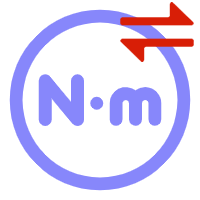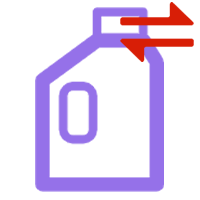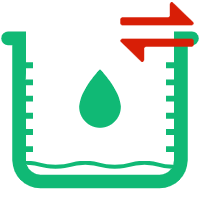
Milligrams to Micrograms Converter
Convert milligrams to micrograms instantly with our weight converter. Perfect for pharmaceutical dosages, nutrition labels, vitamin supplements, scientific measurements, and medical calculations. Get accurate results.
Milligrams to Micrograms Converter
Enter milligrams value and click Convert to get micrograms.
Enter the value to convert
Relationship Between Milligrams and Micrograms
The conversion between milligrams and micrograms is based on the metric system where 1 milligram equals exactly 1,000 micrograms.
1 mg = 1,000 µg (or mcg)
Therefore,
1 µg = 0.001 mg
To convert milligrams to micrograms, we multiply the value in milligrams by 1,000.
For example, 1 milligram equals 1,000 micrograms, 5 milligrams equal 5,000 micrograms, and 100 milligrams equal 100,000 micrograms.
Milligram (mg)
What is a Milligram (mg)?
A milligram (symbol: mg) is a metric unit of mass equal to one thousandth of a gram (1 mg = 0.001 g) or one millionth of a kilogram (1 mg = 0.000001 kg). The prefix 'milli-' means one thousandth. Milligrams are commonly used for measuring small quantities of substances, particularly in medicine, pharmacy, chemistry, and nutrition.
History and Origin of the Milligram
The milligram is part of the metric system, which was developed in France during the French Revolution in the late 18th century. The prefix 'milli-' comes from the Latin 'mille,' meaning thousand. As part of the International System of Units (SI), the milligram provides a convenient unit for measuring masses that are too small to be practically expressed in grams but too large for micrograms.
Milligram in the Metric Scale
The milligram fits into the metric mass scale as follows:
Kilogram (kg): 1,000,000 mg = 1 kg
Gram (g): 1,000 mg = 1 g
Milligram (mg): Base unit for this scale
Microgram (µg): 1 mg = 1,000 µg
Nanogram (ng): 1 mg = 1,000,000 ng
This decimal relationship makes conversions simple and intuitive.
Modern Applications of Milligrams
- Medicine & Pharmacy: Drug dosages and prescription medications (e.g., 500 mg ibuprofen)
- Nutrition: Vitamin and mineral content on food labels (e.g., 60 mg vitamin C)
- Supplements: Dietary supplement dosages and daily values
- Chemistry: Laboratory measurements for chemical reactions and solutions
- Toxicology: Measuring pollutants, toxins, and contaminants
- Biochemistry: Protein, enzyme, and hormone concentrations
- Quality Control: Precision measurements in manufacturing
- Caffeine Content: Beverages like coffee and energy drinks (e.g., 95 mg caffeine per cup)
Why Milligrams in Medicine?
Milligrams are the standard unit for medication dosing because they provide the right level of precision for therapeutic amounts of drugs. Most medications require doses that fall in the milligram range—not too large (grams) and not too small (micrograms, except for very potent drugs). This makes dosing calculations straightforward and reduces the risk of errors. For example, a typical adult aspirin tablet contains 325 mg, and common antibiotics are often prescribed in doses of 250-500 mg.
Microgram (µg or mcg)
What is a Microgram (µg)?
A microgram (symbol: µg or mcg) is a metric unit of mass equal to one millionth of a gram (1 µg = 0.000001 g) or one thousandth of a milligram (1 µg = 0.001 mg). The prefix 'micro-' means one millionth. Micrograms are used for measuring extremely small quantities of substances, particularly in medicine, biochemistry, environmental science, and nutrition.
Symbol: µg vs mcg
Micrograms can be written using two different symbols:
µg (mu-g): Uses the Greek letter mu (µ) for 'micro-' – this is the official SI symbol
mcg: Uses 'mc' as an alternative to avoid confusion, especially in handwritten prescriptions where 'µ' might look like 'm'
In medical contexts, 'mcg' is often preferred to prevent medication errors. For example, if 'µg' is poorly written, it could be mistaken for 'mg,' leading to a 1000-fold dosing error. Both symbols represent the same unit and are equally valid.
Microgram in the Metric Scale
The microgram is part of the metric system's extremely small mass measurements:
Gram (g): 1,000,000 µg = 1 g
Milligram (mg): 1,000 µg = 1 mg
Microgram (µg): Base unit for this scale
Nanogram (ng): 1 µg = 1,000 ng
Picogram (pg): 1 µg = 1,000,000 pg
Modern Applications of Micrograms
- Vitamins & Nutrients: Vitamin B12, vitamin D, folate, and selenium dosages
- Hormones: Thyroid medications and hormone replacement therapy
- Potent Medications: Drugs requiring very precise dosing (e.g., digoxin, fentanyl)
- Trace Elements: Essential minerals like chromium, molybdenum, and iodine
- Environmental Testing: Air and water pollution measurements (particulate matter, heavy metals)
- Food Analysis: Pesticide residues, mycotoxins, and contaminant levels
- Biochemical Research: DNA, RNA, and protein quantification
- Forensics: Trace evidence analysis and drug testing
Why Micrograms Matter
Micrograms are crucial for substances that are biologically active at very small doses. For example:
Vitamin B12: Daily requirement is only 2.4 µg
Vitamin D: Recommended daily intake is 10-20 µg (400-800 IU)
Folic Acid: Pregnant women need 400 µg daily
Selenium: Adults need about 55 µg per day
These nutrients and medications are so potent that even tiny amounts have significant effects. Using micrograms ensures precise dosing without dealing with small decimal numbers if grams or milligrams were used.
Safety Note: mg vs µg
CRITICAL: Never confuse milligrams (mg) with micrograms (µg/mcg). A 1000-fold error can occur if these units are mixed up, which can be fatal with medications. Always double-check the unit on prescription labels, and if handwriting is unclear, clarify with your pharmacist or doctor. This is why many medical professionals now prefer writing 'mcg' instead of 'µg' to reduce the risk of life-threatening dosing errors.
Milligram to Microgram Conversion Table
The conversion of milligrams to micrograms for certain values are provided below:
- Milligrams [mg]
- Micrograms [µg]
- 0.001 mg
- 1 mcg
- 0.01 mg
- 10 mcg
- 0.1 mg
- 100 mcg
- 0.5 mg
- 500 mcg
- 1.0 mg
- 1000 mcg
- 2.0 mg
- 2000 mcg
- 5.0 mg
- 5000 mcg
- 10.0 mg
- 10000 mcg
- 25.0 mg
- 25000 mcg
- 50.0 mg
- 50000 mcg
- 75.0 mg
- 75000 mcg
- 100.0 mg
- 100000 mcg
- 200.0 mg
- 200000 mcg
- 250.0 mg
- 250000 mcg
- 500.0 mg
- 500000 mcg
- 750.0 mg
- 750000 mcg
- 1000.0 mg
- 1000000 mcg
- 2000.0 mg
- 2000000 mcg
- 5000.0 mg
- 5000000 mcg
- 10000.0 mg
- 10000000 mcg

Conversion Calculators














































